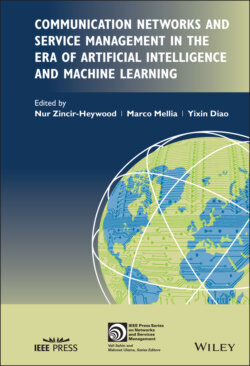Читать книгу Communication Networks and Service Management in the Era of Artificial Intelligence and Machine Learning - Группа авторов - Страница 22
1.2.4 IP Performance Metrics (IPPM)
ОглавлениеInternet Protocol Performance Metrics (IPPM) is an example of a successful standardization effort [9]. It defines metrics for accurately measuring and reporting the quality, performance, and reliability of the network. These include connectivity, one‐way delay and loss, round‐trip delay and loss, delay variation, loss patterns, packet reordering, bulk transport capacity, and link bandwidth capacity measurements. It offers a standard and common ground to define and measure performance so that even measurements performed by different vendors and implementations shall refer to the same monitored metric. In a nutshell, it opens the ability for common performance monitoring.
Among the standard protocols, the One‐Way Active Measurement Protocol and Two‐Way Active Measurement Protocol (OWAMP [10] and TWAMP [11], respectively) metrics specification allows delay, loss, and reordering measurements. OWAMP can be used bi‐directionally to measure one‐way metrics in both directions between two network elements. However, it does not natively support round‐trip or two‐way measurements. The TWAMP extends the OWAMP capabilities to add two‐way or round‐trip measurement. Two hosts are involved in the measurement. In the case of OWAMP, the sender and the receiver collaborate actively to measure the desired performance index. For instance, to compute the one‐way‐delay, both take a proper timestamp of the measurement packet, at the sending and receiving time, respectively. In the TWAMP, the receiver can act as a simple reflector that just sends back (or to a third party) the probe packet sent by the sender, with no additional computation effort.
Open source and proprietary implementations are readily available for both IPv4 and IPv6 protocol stacks. These are commonly integrated in monitoring platforms [12] as well, namely Perfsonar [13] or RIPE Atlas [14].
